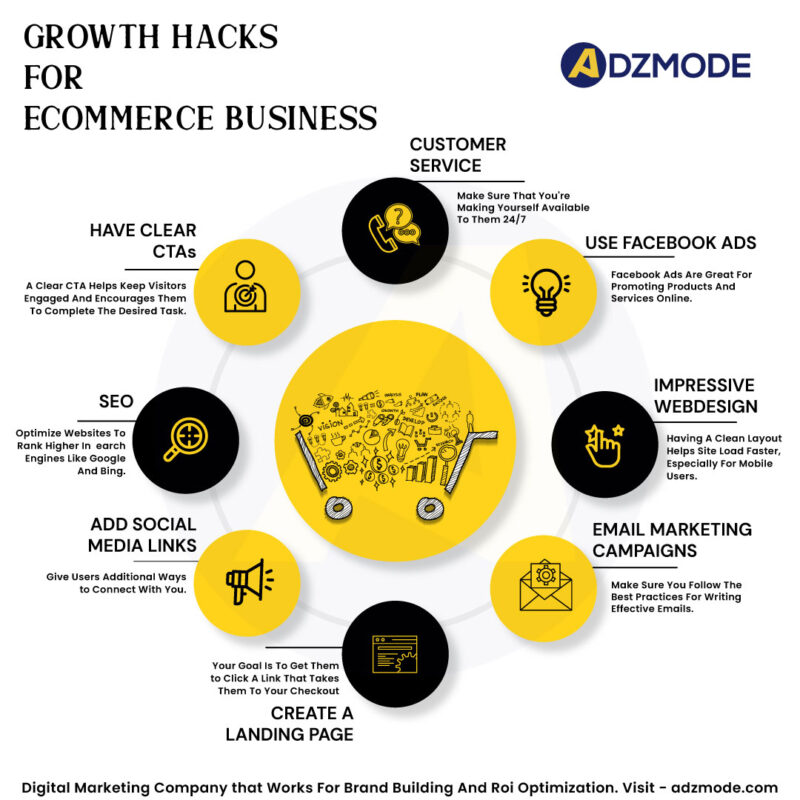
Are you struggling to drive traffic to your online store or wondering why your competitors seem to effortlessly attract customers while you’re left scratching your head? You’re not alone. In today’s digital landscape, having a beautiful ecommerce website isn’t enough—you need a solid digital marketing strategy to thrive. Welcome to ECommerce Digital Marketing 101, where we’ll transform you from a confused store owner into a confident digital marketing strategist who knows exactly how to attract, convert, and retain customers online.
What Is ECommerce Digital Marketing?
Think of ecommerce digital marketing as your virtual storefront’s megaphone. It’s the collection of online strategies and tactics you use to promote your products, reach potential customers, and drive sales through digital channels. Unlike traditional marketing, it allows you to target specific audiences, track every interaction, and adjust your approach in real-time.
ECommerce digital marketing encompasses everything from social media advertising and email campaigns to search engine optimization and influencer partnerships. It’s your ticket to competing with industry giants, even as a small business owner.

Why ECommerce Digital Marketing Matters More Than Ever?
The Digital Shopping Revolution
Remember when shopping meant driving to multiple stores, comparing prices manually, and hoping your size was in stock? Those days are long gone. Today’s consumers research products online, read reviews, compare prices across platforms, and make purchasing decisions within minutes—often while sitting in their pajamas.
Key Statistics That Will Change Your Perspective:
- 95% of consumers read online reviews before making a purchase
- 73% of consumers prefer to buy from brands they follow on social media
- Email marketing generates $42 for every $1 spent
- Mobile commerce accounts for 54% of total ecommerce sales
These numbers aren’t just statistics—they’re opportunities waiting for you to seize them.
Essential Components of ECommerce Digital Marketing 101
1. Search Engine Optimization (SEO)
SEO is like planting seeds in a garden. It takes time to grow, but once it blooms, it provides consistent, organic traffic without ongoing advertising costs.
Key SEO Elements for ECommerce:
- Product page optimization with relevant keywords
- High-quality product descriptions and images
- Fast-loading website performance
- Mobile-friendly design
- Customer reviews and ratings
- Blog content that addresses customer pain points
For SEO, you need to understand why responsive web design is required?
2. Pay-Per-Click Advertising (PPC)
If SEO is planting seeds, PPC is buying a bouquet—instant results, but you pay for each click. Google Ads and social media advertising can drive immediate traffic to your store.
PPC Best Practices:
- Target long-tail keywords with buying intent
- Create compelling ad copy with clear value propositions
- Use retargeting to re-engage website visitors
- Test different ad formats and audiences
- Monitor and adjust budgets based on performance
If you’re feeling overwhelmed or not seeing the results you want, partnering with the best digital marketing agency in India can accelerate your growth. We have a team with proven ecommerce experience and case studies that demonstrate real results.

3. Social Media Marketing
Social media isn’t just about posting pretty pictures—it’s about building relationships with your audience. Each platform serves different purposes in your marketing funnel.
Platform-Specific Strategies:
- Instagram: Visual storytelling and product showcases
- Facebook: Community building and detailed targeting
- TikTok: Trend-based content and younger demographics
- LinkedIn: B2B relationships and professional networking
- Pinterest: Inspiration-driven shopping and DIY content
4. Email Marketing
Email marketing is like having a direct line to your customers’ inbox. It’s personal, cost-effective, and incredibly powerful when done right.
Email Campaign Types:
- Welcome series for new subscribers
- Abandoned cart recovery emails
- Product recommendation emails
- Seasonal promotions and sales
- Customer loyalty and retention campaigns

5. Content Marketing
Content marketing is your opportunity to become the trusted advisor in your industry. By providing valuable information, you build trust and establish authority.
Content Ideas for ECommerce:
- How-to guides using your products
- Behind-the-scenes business stories
- Customer success stories and testimonials
- Industry trends and insights
- Product comparison articles
You may be interested in role of AR in ecommerce
Building Your ECommerce Digital Marketing Strategy
Step 1: Define Your Target Audience
You can’t hit a target you can’t see. Creating detailed buyer personas helps you understand who you’re selling to, what problems they face, and how your products solve those problems.
Key Questions to Answer:
- What age group are your ideal customers?
- What’s their income level and spending habits?
- Where do they spend time online?
- What challenges are they trying to solve?
- What motivates their purchasing decisions?
Step 2: Set SMART Goals
Vague goals lead to vague results. Your objectives should be Specific, Measurable, Achievable, Relevant, and Time-bound.
Example Goals:
- Increase website traffic by 50% in the next 6 months
- Achieve a 3% conversion rate on product pages
- Build an email list of 5,000 subscribers by year-end
- Generate $100,000 in revenue from social media advertising
Step 3: Choose Your Marketing Channels
Don’t try to be everywhere at once. Start with 2-3 channels where your audience is most active, then expand as you gain experience and resources.
Step 4: Create a Content Calendar
Consistency beats perfection every time. A well-planned content calendar ensures you’re regularly engaging with your audience across all chosen platforms.
Advanced ECommerce Digital Marketing Tactics
- Conversion Rate Optimization (CRO)
Getting traffic is only half the battle—converting visitors into customers is where the magic happens. Small improvements in your conversion rate can dramatically impact your bottom line.
CRO Techniques:
- A/B testing different product page layouts
- Optimizing checkout processes
- Adding urgency and scarcity elements
- Implementing customer reviews and social proof
- Improving site search functionality
Marketing Automation
Automation allows you to nurture leads and customers even while you sleep. Set up workflows that trigger based on customer behavior and preferences.
Automation Examples:
- Welcome email sequences for new customers
- Birthday and anniversary promotions
- Win-back campaigns for inactive customers
- Cross-sell and upsell recommendations
Influencer Partnerships
Partnering with influencers can exponentially expand your reach and credibility. The key is finding influencers whose audience aligns with your target market.
Measuring Success: Key Metrics to Track
- Traffic Metrics
- Website visitors and page views
- Traffic sources (organic, paid, social, direct)
- Bounce rate and session duration
- Conversion Metrics
- Conversion rate by traffic source
- Average order value
- Cart abandonment rate
- Customer acquisition cost
- Revenue Metrics
- Monthly recurring revenue
- Customer lifetime value
- Return on ad spend (ROAS)
- Profit margins by product category
Common ECommerce Digital Marketing Mistakes to Avoid

Mistake #1: Neglecting Mobile Optimization
With over half of online shopping happening on mobile devices, a poor mobile experience is a guaranteed way to lose sales.
Mistake #2: Ignoring Customer Reviews
Reviews are digital word-of-mouth marketing. Encourage satisfied customers to leave reviews and respond professionally to negative feedback.
Mistake #3: Focusing Only on Acquisition
It’s cheaper to retain existing customers than acquire new ones. Don’t neglect your current customer base in pursuit of new prospects.
Mistake #4: Inconsistent Brand Messaging
Your brand voice should be consistent across all platforms. Inconsistency confuses customers and dilutes your brand identity.
Want to know, which platform to choose: Shopify vs Magento?
The Future of ECommerce Digital Marketing
Emerging Trends to Watch:
- Artificial Intelligence: Personalization and chatbots
- Voice Search: Optimizing for voice-activated shopping
- Augmented Reality: Virtual try-on experiences
- Social Commerce: Direct purchasing through social platforms
- Sustainability Marketing: Eco-conscious brand messaging
Sometimes, the smart move is knowing when to get help. If your website isn’t converting visitors effectively, working with a professional web design company in India that specializes in ecommerce can significantly improve your conversion rates and user experience.

Frequently Asked Questions
Q: How long does it take to see results from ecommerce digital marketing?
A: Results vary by strategy. PPC advertising can drive immediate traffic, while SEO typically takes 3-6 months to show significant results. Email marketing and social media fall somewhere in between, often showing initial results within 4-8 weeks of consistent effort.
Q: What’s the most cost-effective digital marketing strategy for new ecommerce businesses?
A: Email marketing and content marketing typically offer the highest ROI for new businesses. They require more time than money and help build long-term customer relationships. Social media marketing is also cost-effective if you can create engaging content consistently.
Q: How much should I budget for ecommerce digital marketing?
A: A good rule of thumb is to allocate 7-12% of your gross revenue to marketing. New businesses might need to invest more (15-20%) to gain initial traction, while established businesses can maintain growth with 5-10%.
Q: Which social media platform is best for ecommerce?
A: It depends on your target audience and products. Instagram and Facebook work well for B2C businesses with visual products. LinkedIn is better for B2B. TikTok is great for reaching younger demographics. The key is to be where your customers are most active.
Q: How do I measure the success of my digital marketing efforts?
A: Focus on metrics that directly tie to business goals: conversion rate, customer acquisition cost, average order value, and return on ad spend. Traffic is important, but only if it leads to sales and revenue growth.
Conclusion
Mastering ECommerce Digital Marketing 101 isn’t about implementing every strategy at once—it’s about understanding your customers, choosing the right channels, and consistently delivering value. Start with the basics: optimize your website, create valuable content, and build genuine relationships with your audience.
Remember, digital marketing is a marathon, not a sprint. The businesses that succeed are those that stay consistent, adapt to changes, and never stop learning. Whether you’re just starting your ecommerce journey or looking to take your existing business to the next level, the strategies outlined in this guide will help you build a sustainable, profitable online presence.
Your customers are online right now, searching for solutions you can provide. The only question is: will they find you? With the right digital marketing strategy, the answer will be a resounding yes.
Share Your Project Requirements With Us






